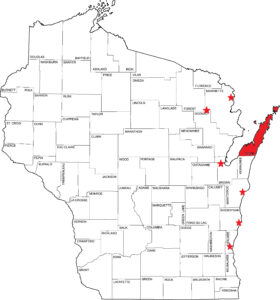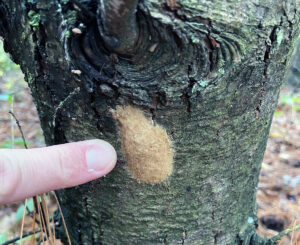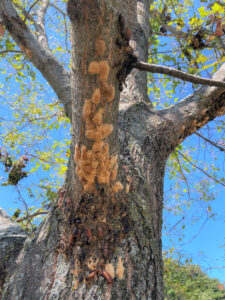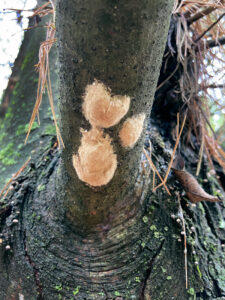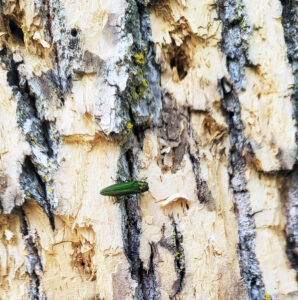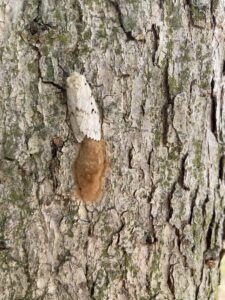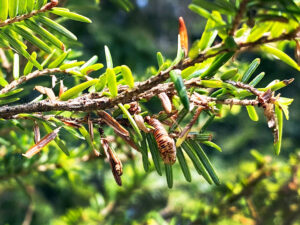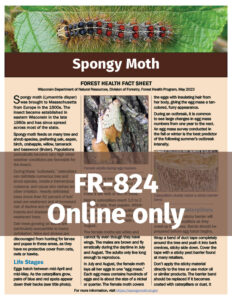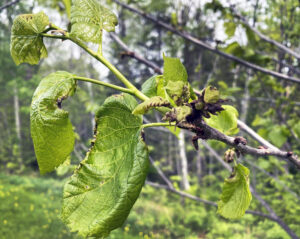By Linda Williams, DNR Forest Health Specialist, Woodruff;
Linda.Williams@wisconsin.gov or 920-360-0665
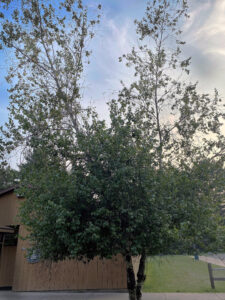
Bronze birch borer has attacked these trees, and parts of the tree above the attack site are thin and declining. / Photo Credit: Linda Williams, Wisconsin DNR
Bronze birch borer (Agrilus anxius) is a native beetle that attacks birch trees. As adults emerge from the bark, they create small, D-shaped exit holes, similar to emerald ash borer but smaller.
Bronze birch borer attacks stressed trees, and the source of the stress can be anything from drought, flooding, defoliation or old age.
Continue reading “Bronze Birch Borer Attacks Stressed Birch”

